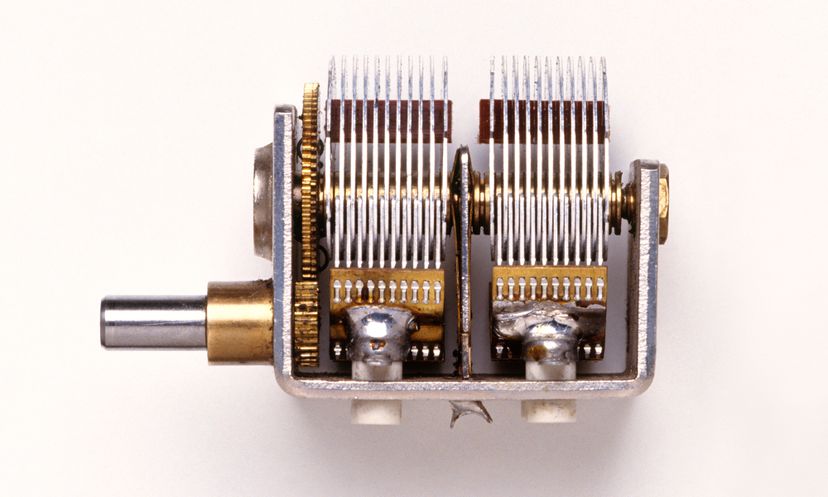
About This Quiz
What looks like a battery, has two terminals like a battery and stores electrons like a battery? Capacitors can store and release electrical energy, but don't replenish their supply. How do capacitors work, and what tools rely on them?In a way, capacitors are like batteries. Although they work in completely different ways, capacitors and batteries both store electrical energy in the form of electrons.
Inside the capacitor, the terminals connect to two metal plates and are separated by a nonconducting substance, called a dielectric.
Mylar capacitors are commonly used for timing circuits, while ceramic ones are used for antennas. Air capacitors power radio tuning circuits.
Advertisement
Once it's charged, the capacitor has the same voltage as the battery -- in this case, 1.5 volts.
Nature shows the capacitor at work in the form of lightning. One plate is the cloud, the other plate is the ground, and the lightning is the charge released between these two.
A capacitor's storage potential, or capacitance, is measured in units called farads.
Advertisement
The difference between a capacitor and a battery is that a capacitor can dump its entire charge in a fraction of a second, whereas a battery would take minutes to completely discharge.
A camera's electronic flash uses a capacitor. The battery charges up the flash's capacitor over several seconds, and then the capacitor dumps the full charge into the flash tube almost instantly.
Large, charged capacitors are extremely dangerous, which is why flash units and TVs have warnings about opening them up. These products contain big capacitors that can, potentially, kill you with the charge they contain.
Advertisement
Records indicate that a German scientist named Ewald Georg von Kleist invented the capacitor in November 1745. Several months later, Pieter van Musschenbroek, a Dutch professor at the University of Leyden, came up with a very similar device in the form of the Leyden jar, typically credited as the first capacitor.